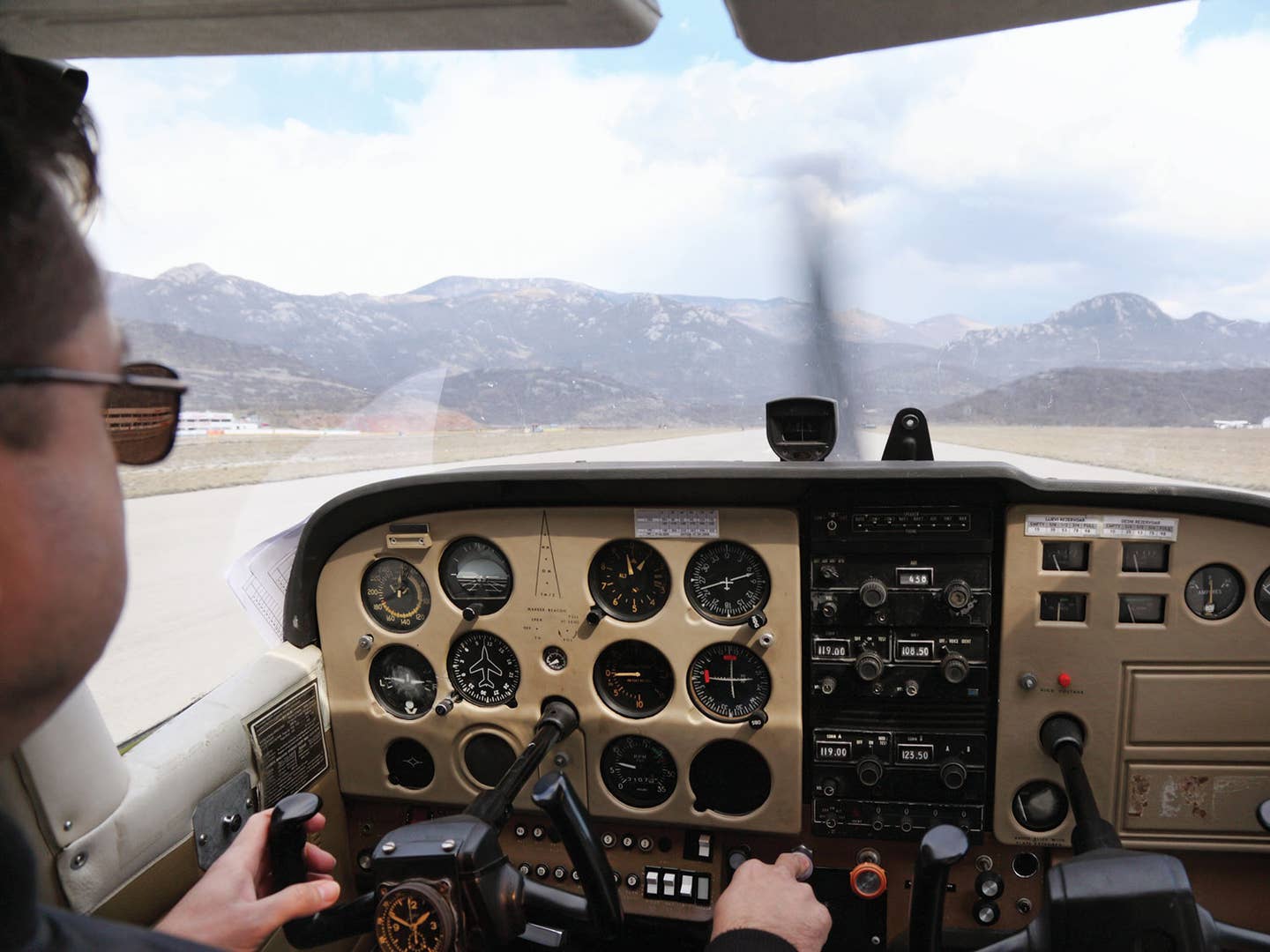
As always, staying ahead of the airplane is the key to successful single-pilot IFR. iStock/vuk8691
Like many aviation enthusiasts, my introduction to general aviation and piston airplanes was Flying magazine. As a kid in the 1990s, I always looked forward to heading to the barbershop with my dad where I could read the latest copy of Flying while waiting my turn for a haircut. I hoped to see a full parking lot with a long wait inside so I'd have plenty of time to flip through all the pages and check out the latest pictures of Beech Barons, King Airs and the new Cessna 172s and 182s that were coming off the line again in Wichita, Kansas.
Every issue was an adventure, and I was especially drawn toward Richard Collins' articles, even though most of the content was way over my head at the time. I could tell he was a legend in the aviation community, but I didn't come to fully appreciate the breadth of his knowledge and aviation wisdom until, ironically enough, I found myself working alongside him 15 years later at Sporty's Pilot Shop.
As a new CFI and video producer, one of my first projects was to assist Richard with editing the next episode of his popular Air Facts video series. Titled IFR Crew of One, this was going to be his take on flying single-pilot IFR based on his thousands of hours flying his pressurized Cessna 210 Centurion.
I vividly remember during our first in-person planning meetings listening to him talk as he explained how he could generate a local weather forecast for our airport over the next 12 to 24 hours just by walking outside, standing with his back to the wind and analyzing the cloud types and how high they were above the ground — my mind was blown. Weather analysis was in his blood, and it came as natural to him as breathing for most people.
Read More about IFR: Instrument Flight Rules
He made my job as a video producer for this next Air Facts video a breeze because he always carried a Sony Handycam and a bag full of blank tapes on his flights, capturing the instrument panel during approaches and the views out the window of the weather. The imagery helped fully illustrate the key takeaways and lessons from the day. He had perfected aviation video storytelling long before the internet and GoPro cameras.
I learned a lot from Richard while working on that project and it inspired me to take a fresh look at the concept of single-pilot IFR in both my personal flying and when working with instrument students. As a new instrument instructor, I found that instrument training seemed to place too much emphasis on executing instrument-approach procedures. While this element is an integral part of instrument flying, flying approaches over and over again in preparation for the check ride doesn’t lend itself to the real world of IFR flying.
Practically speaking, “single-pilot IFR” is nothing more than a label describing a type of flight operation, but my real focus was on preparation and doing it well. I quickly found that I felt much more comfortable flying alone in the clouds when I made a concerted effort to stay ahead of the airplane and avoid surprises. In 2004 this involved a series of small tasks such as preparing a paper navlog with all communication frequencies written down; organizing paper instrument-approach charts into plastic sleeves for the departure; analyzing approach and alternate options; keeping a flight timer within arm’s reach; and having contingencies if the weather didn’t live up to the forecast.
It’s a fact that IFR flights conducted with a two-person crew have a better safety record than those flown by a single pilot, and there’s good reason for that. While it’s true that these two-crew operations are typically in turbine-powered aircraft, the real safety advantage comes from the human redundancy in the cockpit, not the equipment being flown.
There’s an extra pilot to double check the preflight preparation of the PIC and assist with flight duties when the workload ramps up during an instrument approach.
Today, technology is playing an increasingly important role in the cockpit and can manage many of the responsibilities usually handled by the person in the right seat, serving as a digital copilot. For example, take the iPad running an aviation EFB app. Like a good copilot, the iPad can provide contextual information before and during a flight, call out abnormalities or deviations and assist with duties during high-workload phases of flight. It’s the next best thing to the human alternative.
Let's start with the preflight. The Garmin Pilot app includes several helpful utilities to monitor your preflight preparation. After entering your personal weather criteria — max surface winds, minimum ceiling and visibility — the app will check the weather forecasts for airports in your flight plan and alert you when the weather exceeds your limits. It also will alert you when an alternate airport is required for IFR flight plans based on the destination weather forecast.
ForeFlight can be a big help before takeoff by automatically retrieving your IFR clearance at major airports. This function is called Pre-Departure Clearance (PDC), and can significantly reduce workload and time for the single pilot when a complex IFR clearance is expected. And it's guaranteed to be both error-free and more legible than a copilot's scribble on scrap paper in the cockpit.
In the air, both Garmin Pilot and ForeFlight offer a robust set of alerting features. The apps can provide visual and aural alerts when approaching nearby terrain or obstacles, ADS-B traffic, approaching nearby airspace and active TFRs. ForeFlight takes these critical alerts one step further to ensure you don’t miss a thing, including when you’re approaching an active runway on the ground, displaying the ATIS or AWOS frequency when approaching the destination and even calling out which runway you’re lined up with on final approach.
And then, after landing, both apps will recognize as you decelerate on the runway and automatically display the airport diagram with an overlay of your position. This automation is key at a critical time, saving you from head-down time searching for the chart in the app.
Here’s one final tip — if you have an aviation headset or installed intercom that supports Bluetooth audio, pair your iPad to your headset and you’ll never miss one of the aural alerts.
Preparation is key here, so grab your headset and iPad when you have some free time and test this feature. Take a look at your iPad apps settings page to review the alerts and verify they are enabled and that the alert audio option is enabled too. Remember that even with this digital assistance, you are the PIC of the flight — not the iPad — so it’s critical to have a good working knowledge of all the capabilities and what the alerts are telling you, so you can distinguish between a developing issue versus a false alarm.
The goal should be always to stay ahead of the airplane when flying single-pilot IFR, and the majority of the time you’ll find that these alerts will simply be a confirmation of what you already know. It’s the occasions when flying alone or in challenging weather and even in dealing with high ATC demands that one of these alerts can get your attention and break the error chain.

Sign-up for newsletters & special offers!
Get the latest FLYING stories & special offers delivered directly to your inbox






